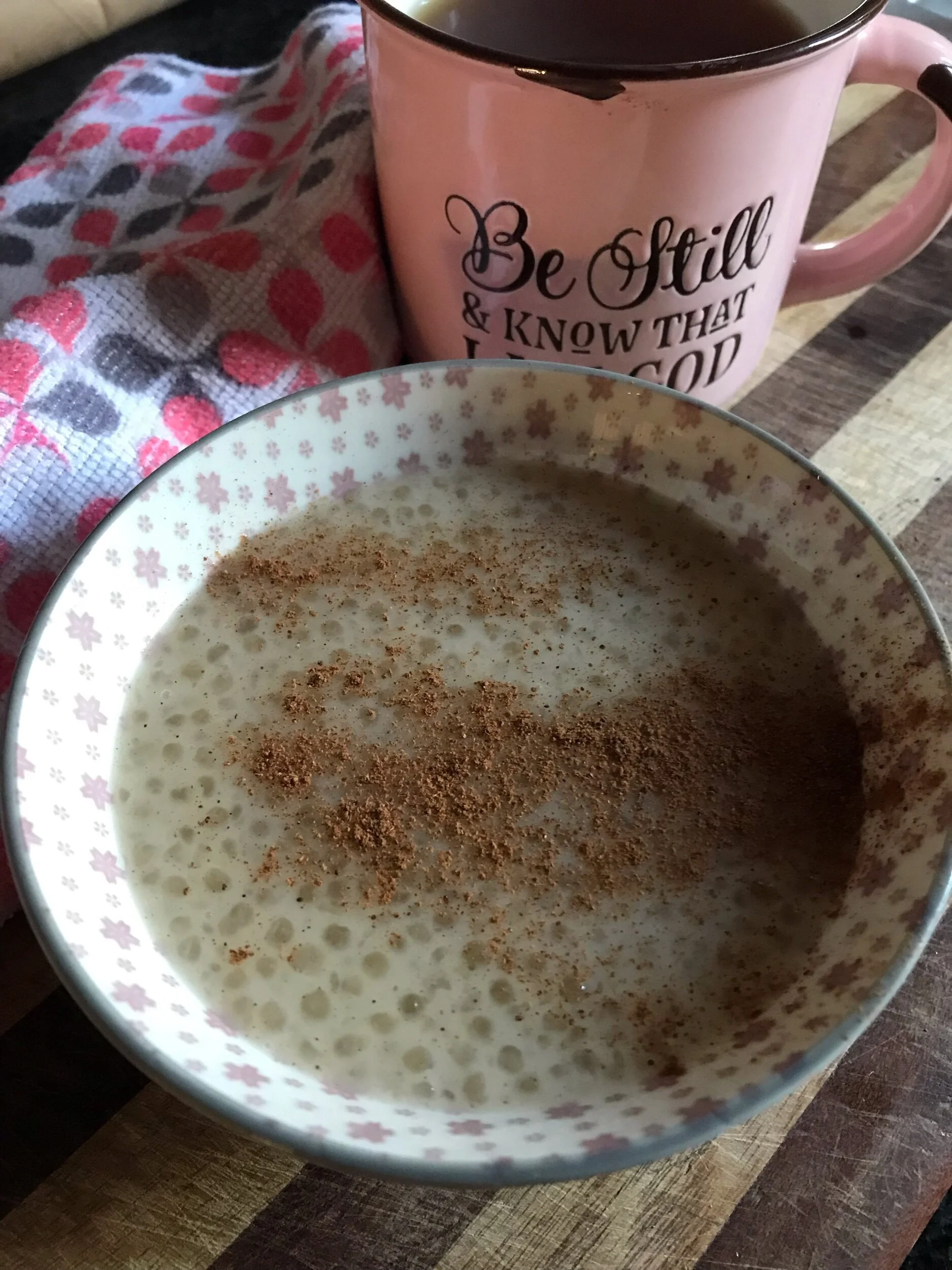Sugar-Free Sago Pudding

My mother resorted to three things when my brother and I got sick. In a feverish bid to get us to eat she would ply us with either hot custard, siroh (soji) or sago pudding. The sago was my sunshine and each time I get sick I make this in bulk to comfort myself.
Exactly two weeks ago, I woke up with a sore throat and I could not have felt worse. I started taking Vitamin C and immediately soaked some sago. There’s just something soothing about these tiny pearl balls. It can still even a crying toddler and I know this because I offered up a bowl to a neighbor who’s little girl was just so upset one day.
This recipe is carb heavy so I don’t ever add sugar to it, instead I use Xylitol or honey.
Did you know: Sago is naturally gluten-free and fantastic for endurance athletes. It’s not very nutritious but a very good source of energy. 100 g of sago has 94 g carbs, and roughly 355 calories. It is harvested from the pith of tropical palm trees and is a complex carb consisting of many glucose molecules. Glucose is a type of sugar that your body needs for energy. Sago is also a staple in Thailand, Indonesia, Malaysia, the Philippines and New Guinea.
Ingredients
1/2 cup of sago that’s pre-soaked for an hour or overnight (I buy mine from Pick n Pay/Checkers)
2 1/2 cups milk
1 whole cinnamon stick
1/2 tsp Nutmeg (you can omit if you don’t have the spice)
1 /2 tsp All Spice
1/2 cup Xylitol
1 egg
1 tsp Vanilla
Method
Cook the pre-soaked sago on medium heat with milk until it thickens slightly.
Add sugar 1/4 cup at a time, stirring the entire time.
When the mixture starts to simmer, add all your spice to the pot, lower the heat immediately and keep stirring.
The sago will start to become see-through at this point and your pudding will thicken even more. Keep stirring to avoid anything sticking to the pot.
Take the pot off the stove, but keep the stove on.
In a separate dish, beat your egg and very slowly whisk in some of the pudding to prevent the two from curdling.
Pour this mixture into your pot and return back to the hot stove. Crank up the temperature to medium-high heat. Stir for 2-3 minutes until a thicker pudding consistency forms. Don’t let the mixture boil under any circumstance or else the egg custard will curdle.
Cool completely before adding vanilla.






